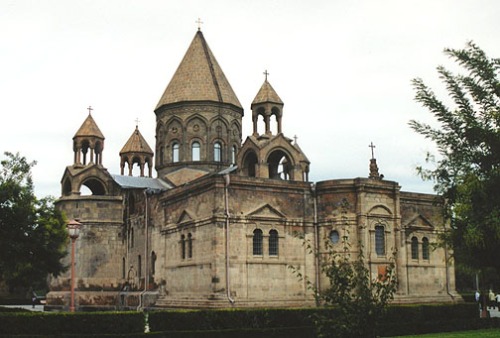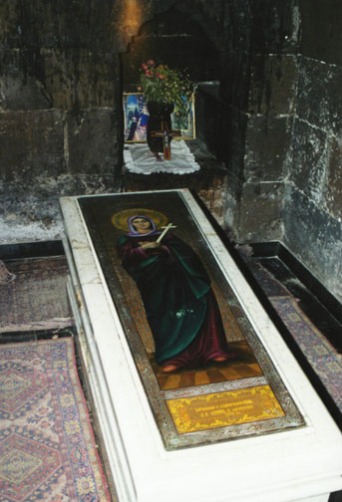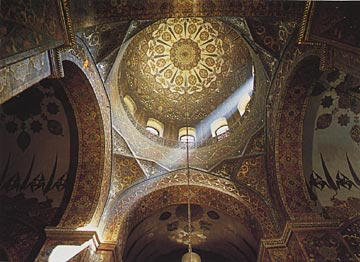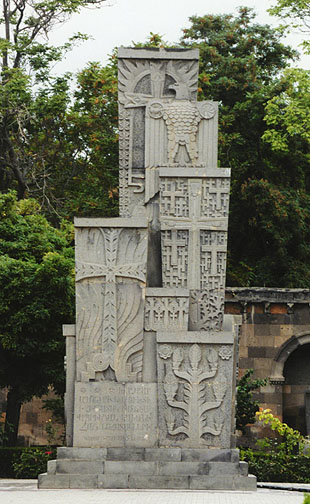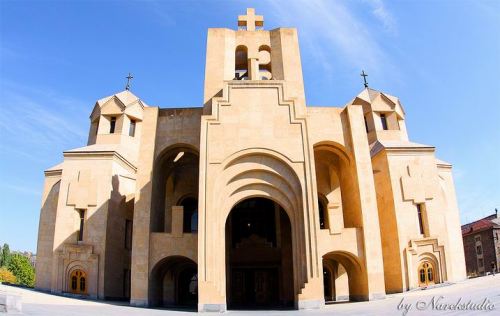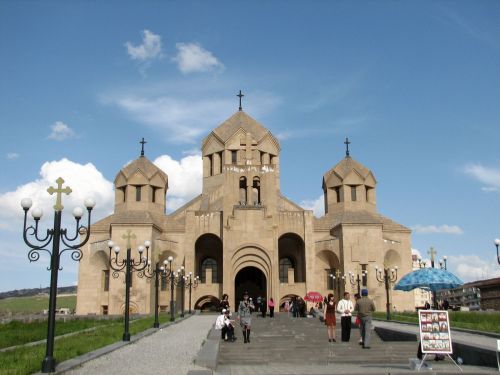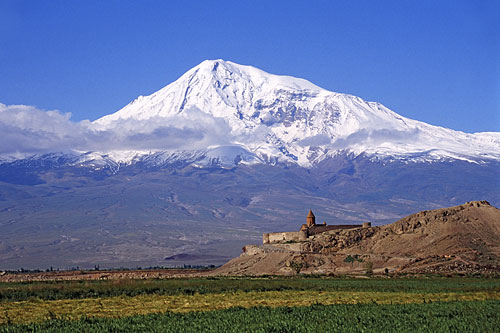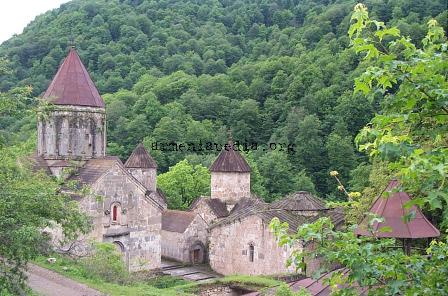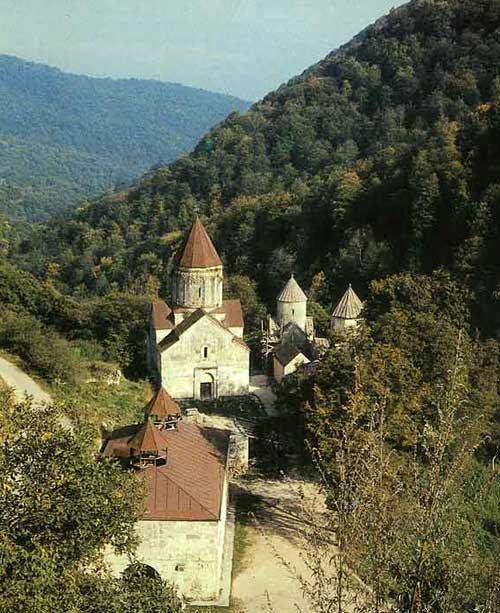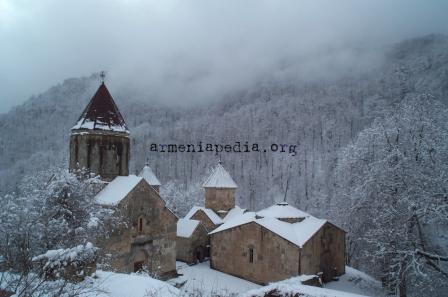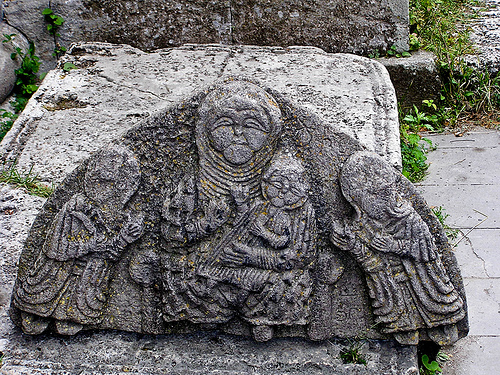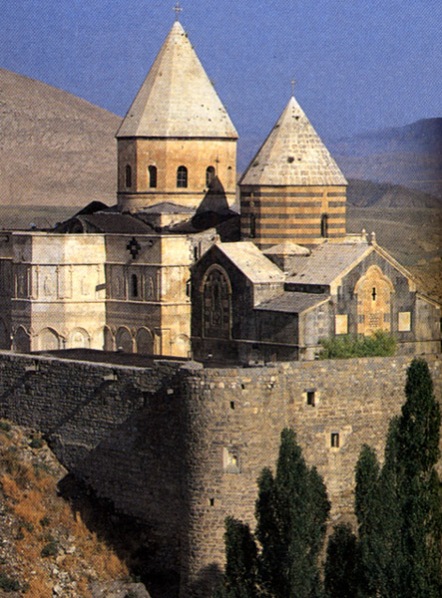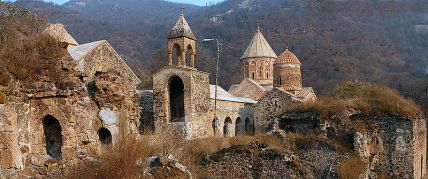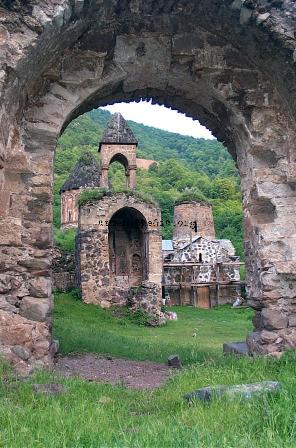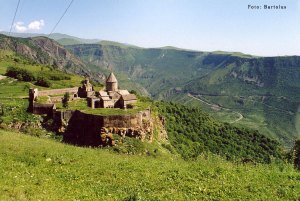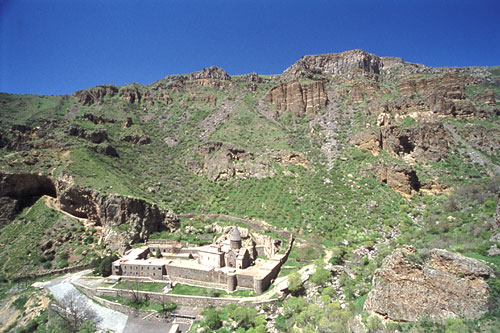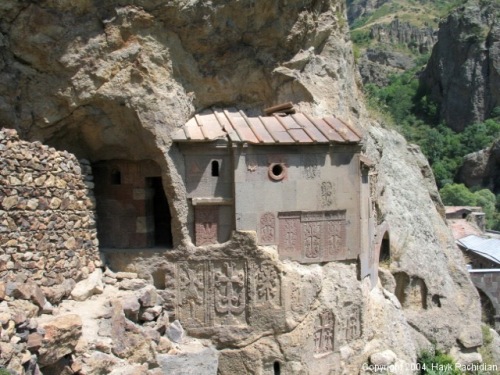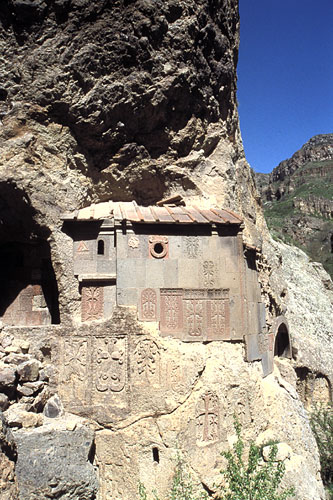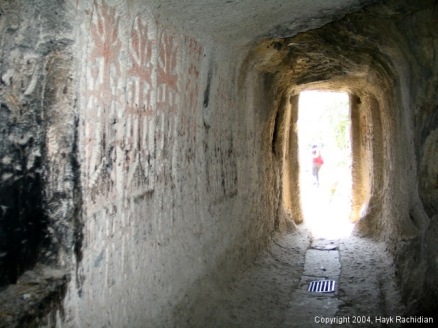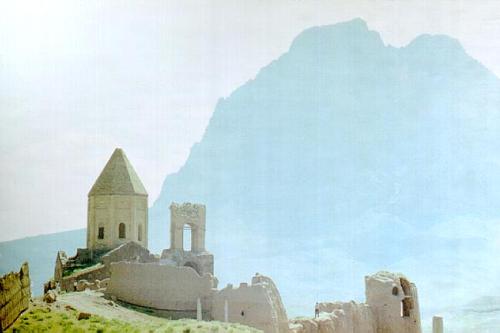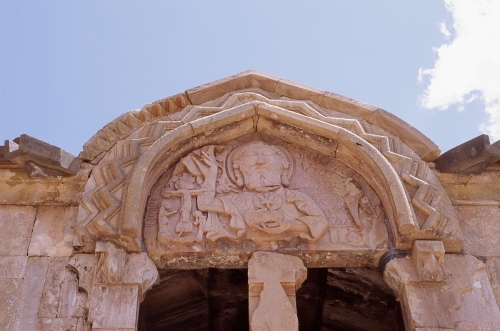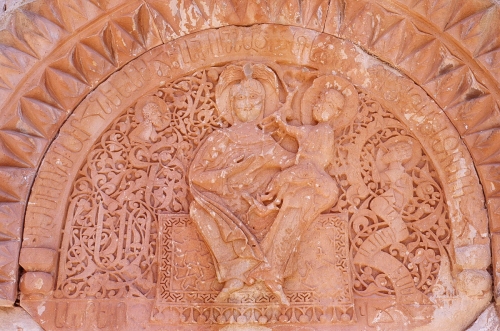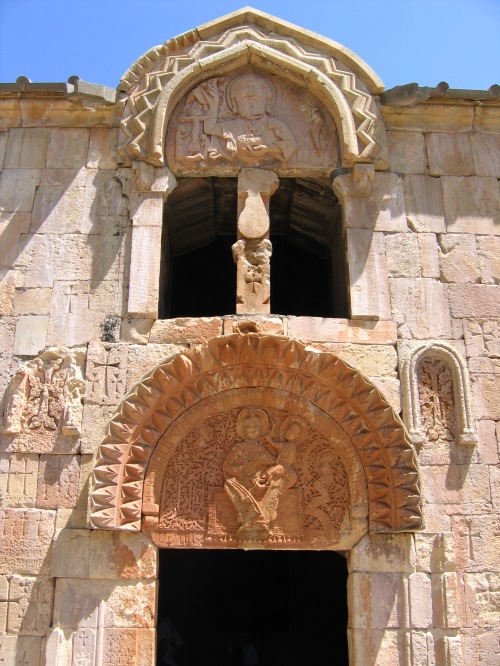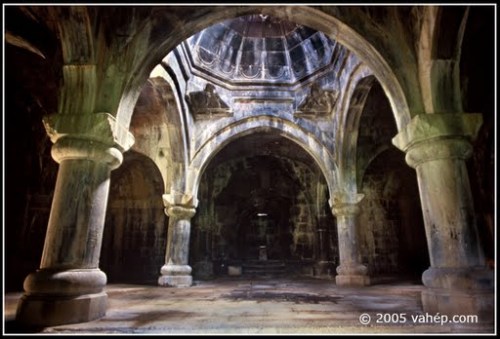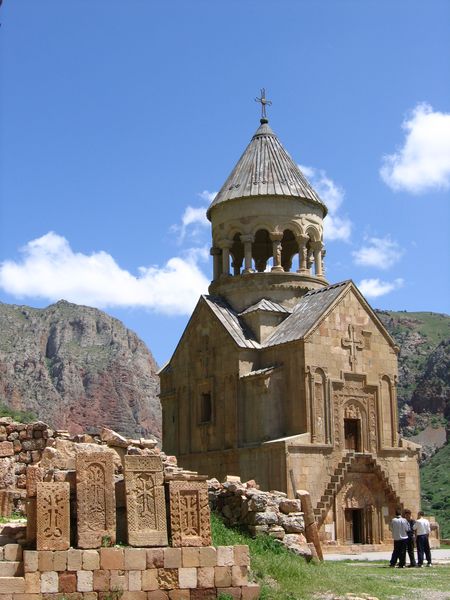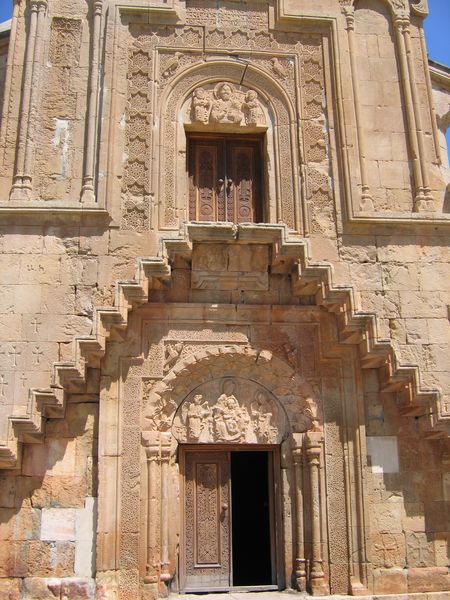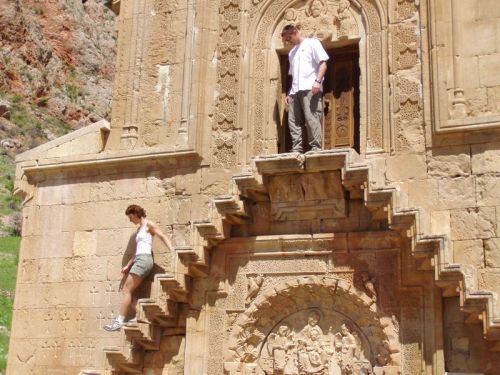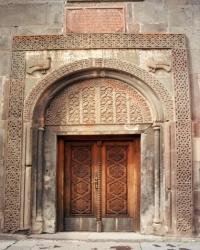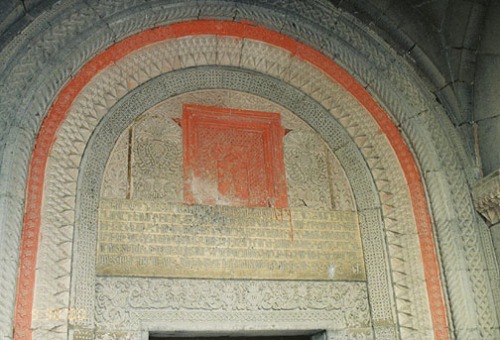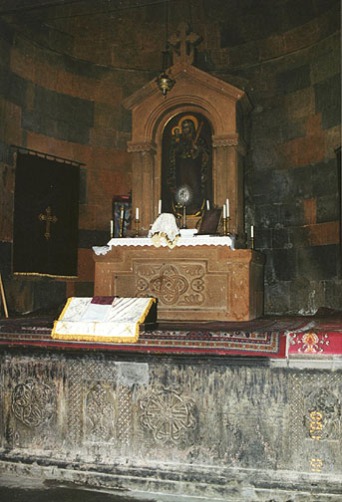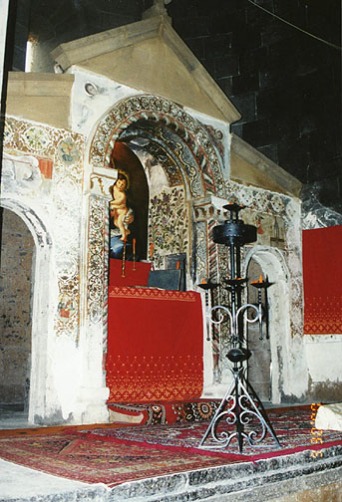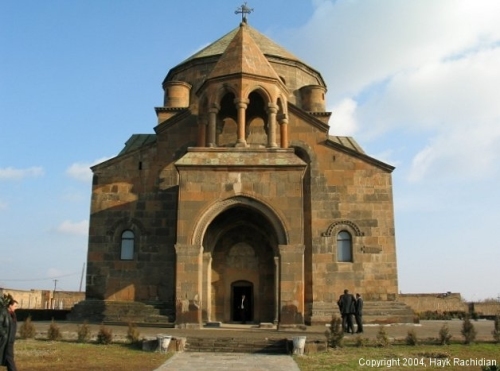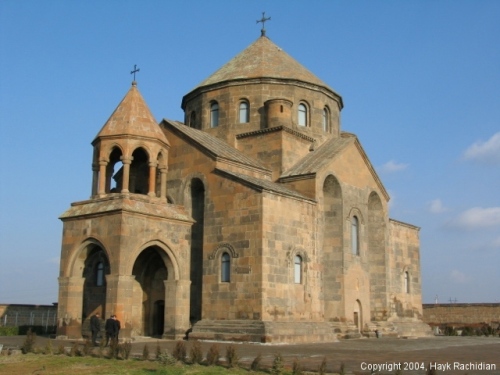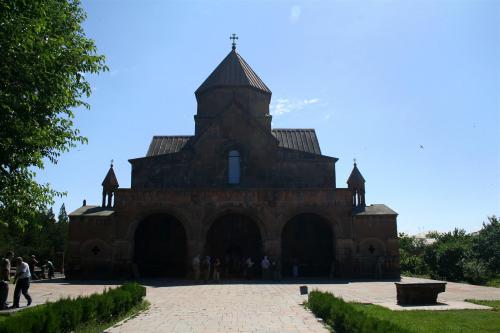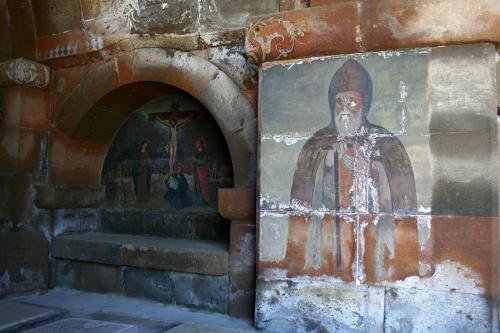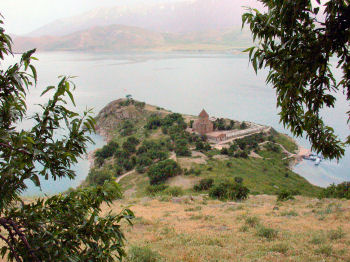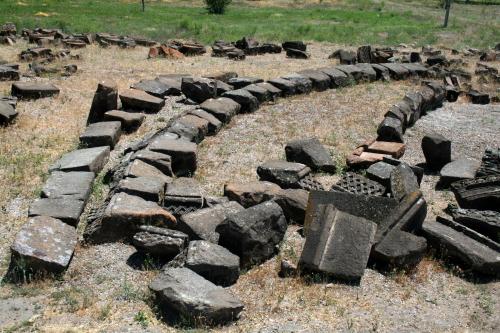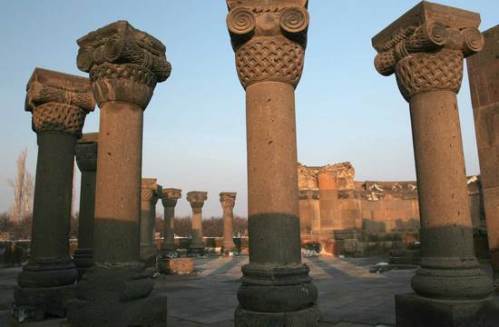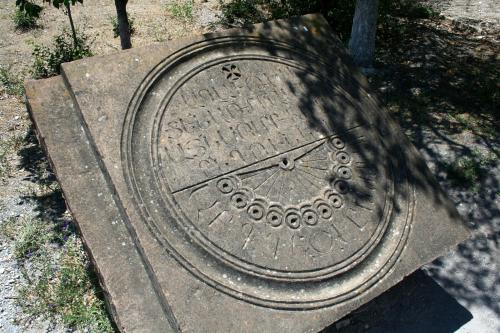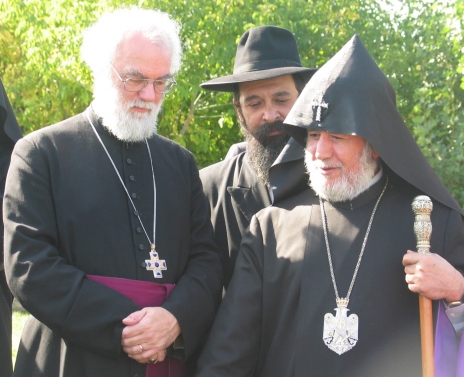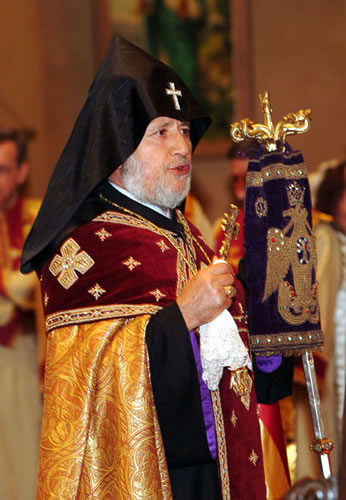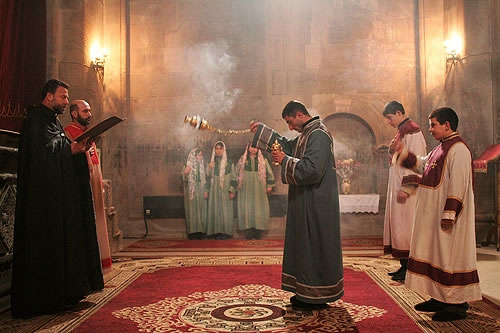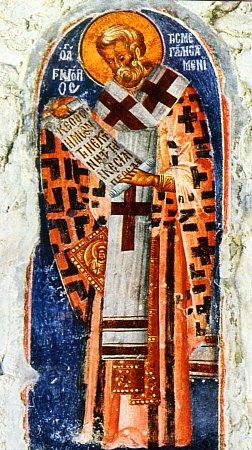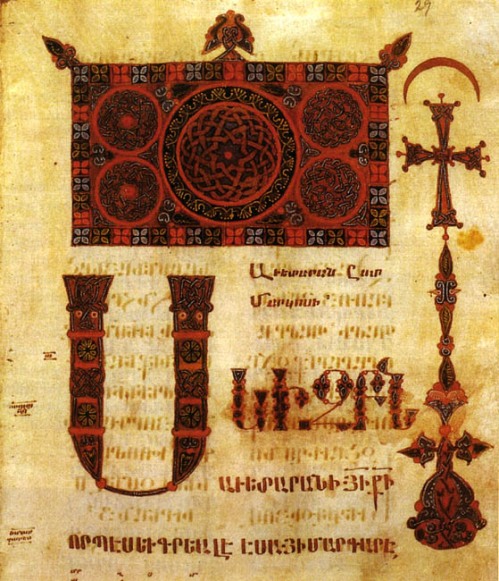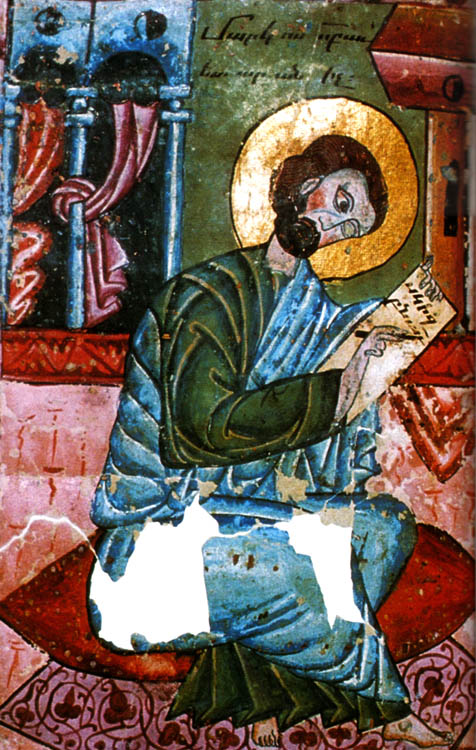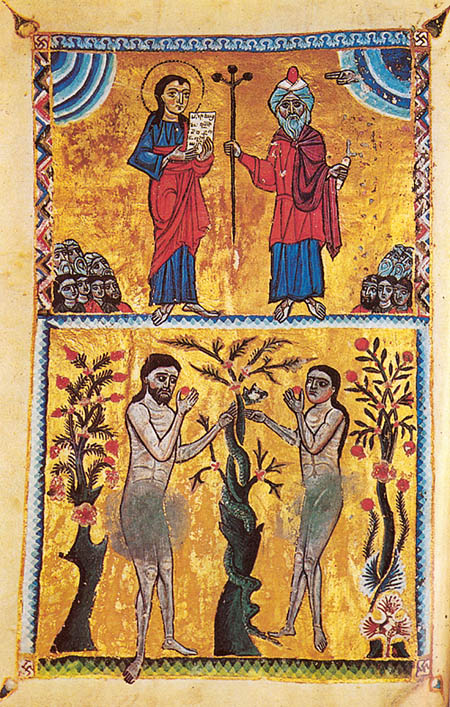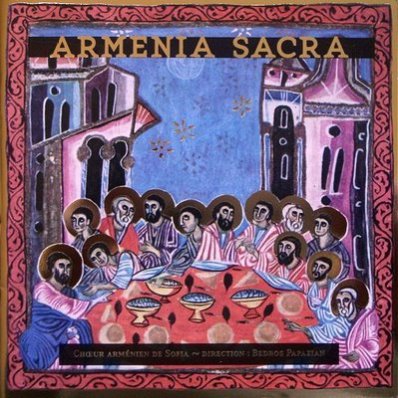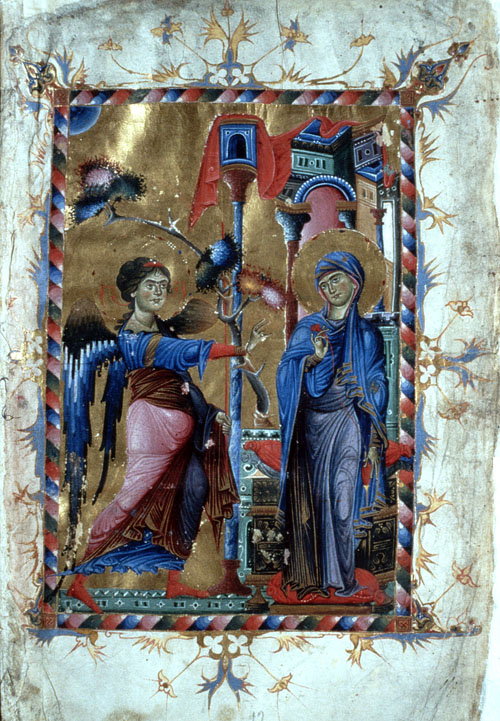
Western Steppe Herders – Wikipedia
Armenians is the original people in the Armenian Highland. Armenians traditionally lived not only on the territory of the modern nation of Armenia, which today is known as Eastern Armenia, but also in Western Armenia, which today is Eastern Turkey. Armenian language is part of the great Indo-European family of languages.
Armenian men’s most common Y-DNA (paternal) haplogroup is R1b, found in about 28 percent of those studied. J2 is the next most common at a frequency of 22 percent. Other haplogroups found among them, in descending order of frequencies, include G (11%), J1 (11%), R1a (8%), T (6%), E (5%), I (4%), L (4%), N (2%), and others (1%).
Nomadic pastoralism is a form of pastoralism when livestock are herded in order to find fresh pastures on which to graze. The herded livestock include cows, buffalos, yaks, llamas, sheep, goats, reindeer, horses, donkeys or camels, or mixtures of species.
Nomadic pastoralism was a result of the Neolithic revolution and the rise of agriculture. During that revolution, humans began domesticating animals and plants for food and started forming cities.
Nomadism generally has existed in symbiosis with such settled cultures trading animal products (meat, hides, wool, cheese and other animal products) for manufactured items not produced by the nomadic herders.
In the past it was asserted that pastoral nomads left no presence archaeologically or were impoverished, but this has now been challenged, and was clearly not so for many ancient Eurasian nomads, who have left very rich kurgan burial sites.
Pastoral nomadic sites are identified based on their location outside the zone of agriculture, the absence of grains or grain-processing equipment, limited and characteristic architecture, a predominance of sheep and goat bones, and by ethnographic analogy to modern pastoral nomadic peoples.
It has been hypothetised that R1b people (perhaps alongside neighbouring J2 tribes) were the first to domesticate cattle in northern Mesopotamia some 10,500 years ago. R1b tribes descended from mammoth hunters, and when mammoths went extinct, they started hunting other large game such as bisons and aurochs.
With the increase of the human population in the Fertile Crescent from the beginning of the Neolithic (starting 12,000 years ago), selective hunting and culling of herds started replacing indiscriminate killing of wild animals. The increased involvement of humans in the life of aurochs, wild boars and goats led to their progressive taming.
Cattle herders probably maintained a nomadic or semi-nomadic existence, while other people in the Fertile Crescent (presumably represented by haplogroups E1b1b, G and T) settled down to cultivate the land or keep smaller domesticates.
The development of early cereal agriculture is thought to have been conducted by men belonging primarily to haplogroups G2a (northern branch, from Anatolia to Europe), as well as E1b1b and T1a (southern branch, from the Levant to the Arabian peninsula and North Africa).
The analysis of bovine DNA has revealed that all the taurine cattle (Bos taurus) alive today descend from a population of only 80 aurochs. The earliest evidence of cattle domestication dates from circa 8,500 BCE in the Pre-Pottery Neolithic cultures in the Taurus Mountains.
The two oldest archaeological sites showing signs of cattle domestication are the villages of Çayönü Tepesi in southeastern Turkey and Dja’de el-Mughara in northern Iraq, two sites only 250 km away from each others. This is presumably the area from which R1b lineages started expanding – or in other words the “original homeland” of R1b.
The early R1b cattle herders would have split in at least three groups. One branch (M335) remained in the Armenian Highland, but judging from its extreme rarity today wasn’t very successful, perhaps due to the heavy competition with other Neolithic populations in the area, or to the scarcity of pastures in this mountainous environment.
Bull Worship
Haplogroup J2 is thought to have appeared somewhere in the Middle East towards the end of the last glaciation, between 15,000 and 22,000 years ago. The oldest known J2a samples at present were identified in remains from the Hotu Cave in northern Iran, dating from 9100-8600 BCE, and from Kotias Klde in Georgia, dating from 7940-7600 BCE.
This confirms that haplogroup J2 was already found around the Caucasus and the southern Caspian region during the Mesolithic period. The first appearance of J2 during the Neolithic came in the form of a 10,000 year-old J2b sample from Tepe Abdul Hosein in north-western Iran in what was then the Pre-Pottery Neolithic.
Notwithstanding its strong presence in West Asia today, haplogroup J2 does not seem to have been one of the principal lineages associated with the rise and diffusion of cereal farming from the Fertile Crescent and Anatolia to Europe.
It is likely that J2 men had settled over most of Anatolia, the South Caucasus and Iran by the end of the Last Glaciation 12,000 years ago. It is possible that J2 hunter-gatherers then goat/sheep herders also lived in the Fertile Crescent during the Neolithic period.
No Neolithic sample from Central or South Asia has been tested to date, but the present geographic distribution of haplogroup J2 suggests that it could initially have dispersed during the Neolithic from the Zagros mountains and northern Mesopotamia across the Iranian plateau to South Asia and Central Asia, and across the Caucasus to Russia (Volga-Ural).
The first expansion probably correlated with the diffusion of domesticated of cattle and goats (starting c. 8000-9000 BCE), rather than with the development of cereal agriculture in the Levant. A second expansion would have occured with the advent of metallurgy.
J2 could have been the main paternal lineage of the Kura-Araxes culture (Late Copper to Early Bronze Age), which expanded from the southern Caucasus toward northern Mesopotamia and the Levant. After that J2 could have propagated through Anatolia and the Eastern Mediterranean with the rise of early civilizations during the Late Bronze Age and the Early Iron Age.
Quite a few ancient Mediterranean and Middle Eastern civilisations flourished in territories where J2 lineages were preponderant. This is the case of the Hattians, the Hurrians, the Etruscans, the Minoans, the Greeks, the Phoenicians (and their Carthaginian offshoot), the Israelites, and to a lower extent also the Romans, the Assyrians and the Persians. All the great seafaring civilisations from the middle Bronze Age to the Iron Age were dominated by J2 men.
There is a distinct association of ancient J2 civilisations with bull worship. The oldest evidence of a cult of the bull can be traced back to Neolithic central Anatolia, notably at the sites of Çatalhöyük and Alaca Höyük.
Bull depictions are omnipresent in Minoan frescos and ceramics in Crete. Bull-masked terracotta figurines and bull-horned stone altars have been found in Cyprus (dating back as far as the Neolithic, the first presumed expansion of J2 from West Asia).
The Hattians, Sumerians, Babylonians, Canaaites, and Carthaginians all had bull deities (in contrast with Indo-European or East Asian religions). The sacred bull of Hinduism, Nandi, present in all temples dedicated to Shiva or Parvati, does not have an Indo-European origin, but can be traced back to Indus Valley civilisation.
Minoan Crete, Hittite Anatolia, the Levant, Bactria and the Indus Valley also shared a tradition of bull leaping, the ritual of dodging the charge of a bull. It survives today in the traditional bullfighting of Andalusia in Spain and Provence in France, two regions with a high percentage of J2 lineages.
Levant and North Africa
A second branch of R1b migrated south to the Levant, where it became the V88 branch. Some of them searched for new lands south in Africa, first in Egypt, then colonising most of northern Africa, from the Mediterranean coast to the Sahel.
Like its northern counterpart (R1b-M269), R1b-V88 is associated with the domestication of cattle in northern Mesopotamia. Both branches of R1b probably split soon after cattle were domesticated, approximately 10,500 years ago (8,500 BCE).
R1b-V88 migrated south towards the Levant and Egypt. The migration of R1b people can be followed archeologically through the presence of domesticated cattle, which appear in central Syria around 8,000-7,500 BCE (late Mureybet period), then in the Southern Levant and Egypt around 7,000-6,500 BCE (e.g. at Nabta Playa and Bir Kiseiba).
Cattle herders subsequently spread across most of northern and eastern Africa. The Sahara desert would have been more humid during the Neolithic Subpluvial period (c. 7250-3250 BCE), and would have been a vast savannah full of grass, an ideal environment for cattle herding.
A warm and humid monsoon climate prevailed in North Africa at the beginning of the Holocene, favourable to savannah with numerous lakes. The cooling and decreasing of African monsoons at 6200 BC caused dry climatic conditions. Some authors suggest that this periodwas a key point in the development of cattle pastoralism in the Sahara.
Increased aridity is believedto have played a key role in encouraging the integra-tion of cattle herding with existing hunting and for-aging systems. The ex-ploitation of mountain pastures for goat and sheepgrazing (possibly developed first in western Asia)was a result of drier conditions in the foothills ofLibya.
In this period, the dispersal and isolation ofdifferent cultural groups occurred all across the Sa-hara. These groups migrated to unknown territoriesin search of water and pastures. Subsequently, settle-ments grew up around water basins.
The earliest settlements in the southern part of Egyptconsisted of small groups engaged in cattle husbandry and pottery making. The 6200 BC climate event resulted in economicdevelopments such as the appearance of small cat-tle and the growth of settlements with numerous fireplaces near large water basins.
Pre-Pottery Neolithic B (PPNB)
Haplogroup G formed approximately 50,000 years ago as a side lineage of haplogroup IJK, but seems to have had a slow start, evolving in isolation for tens of thousands of years, possibly in the Near East, cut off from the wave of colonisation of Eurasia.
The highest genetic diversity within haplogroup G is found in the northern part of the Fertile Crescent, between the Levant and the Caucasus, which is a good indicator of its region of origin. So far, the only G2a people negative for subclades downstream of P15 or L149.1 were found exclusively in the South Caucasus region.
As of late 2016, there were 303 mutations (SNPs) defining haplogroup G, confirming that this paternal lineage experienced a severe bottleneck before splitting into haplogroups G1 and G2. G1 might have originated around modern Iran at the start of the Last Glacial Maximum (LGM), some 26,000 years ago.
G2 would have developed around the same time in West Asia. At that time humans would all have been hunter-gatherers, and in most cases living in small nomadic or semi-nomadic tribes. Members of haplogroup G2 appear to have been closely linked to the development of early agriculture in the Fertile Crescent part, starting 11,500 years before present.
The G2a branch expanded to Anatolia, the Caucasus and Europe, while G2b diffused from Iran across the Fertile Crescent and east to Pakistan. It is now found mostly among Lebanese and Jewish people, but also at low frequency in the Arabian peninsula, Syria, Iraq, Iran, Afghanistan and Pakistan.
It is thought that early Neolithic farmers expanded from northern Mesopotamia westwards to Anatolia and Europe, eastwards to South Asia, and southwards to the Arabian peninsula and North and East Africa.
The testing of Neolithic remains in various parts of Europe has confirmed that haplogroup G2a was the dominant lineages of Neolithic farmers and herders who migrated from Anatolia to Europe between 9,000 and 6,000 years ago.
Pre-Pottery Neolithic B (PPNB) is part of the Pre-Pottery Neolithic, a Neolithic culture centered in upper Mesopotamia, dating to c. 8800 – 6500 BCE. It was typed by Kathleen Kenyon during her archaeological excavations at Jericho in the West Bank.
Like the earlier Pre-Pottery Neolithic A (PPNA) people, the PPNB culture developed from the Mesolithic Natufian culture. However, it shows evidence of a northerly origin, possibly indicating an influx from the Armenian Highland.
Cultural tendencies of this period differ from that of the earlier PPNA period in that people living during this period began to depend more heavily upon domesticated animals to supplement their earlier mixed agrarian and hunter-gatherer diet.
This is the first period in which architectural styles of the southern Levant became primarily rectilinear; earlier typical dwellings were circular, elliptical and occasionally even octagonal.
Pyrotechnology was highly developed in this period. During this period, one of the main features of houses is a thick layer of white clay plaster flooring, highly polished and made of lime produced from limestone. It is believed that the use of clay plaster for floor and wall coverings during PPNB led to the discovery of pottery.
The earliest proto-pottery was White Ware vessels, made from lime and gray ash, built up around baskets before firing, for several centuries around 7000 BCE at sites such as Tell Neba’a Faour (Beqaa Valley).
Sites from this period found in the Levant utilizing rectangular floor plans and plastered floor techniques were found at Ain Ghazal, Yiftahel (western Galilee), and Abu Hureyra (Upper Euphrates). The period is dated to between c. 8700 and c. 6000 BCE.
Plastered human skulls were reconstructed human skulls that were made in the ancient Levant between 9000 and 6000 BC in the Pre-Pottery Neolithic B period. The skulls denote some of the earliest sculptural examples of portraiture in the history of art. They represent some of the oldest forms of art in the Middle East and demonstrate that the prehistoric population took great care in burying their ancestors below their homes.
Tell Aswad (“Black hill”; c. 8700 – 7500 BC), Su-uk-su or Shuksa, was a large fully established PPNB agricultural village, about 5 hectares (540,000 sq ft) in size, located around 48 kilometres (30 mi) from Damascus in Syria, on a tributary of the Barada River at the eastern end of the village of Jdeidet el Khass.
It was earlier suggested a PPNA Aswadian culture, but this has not been validated. Instead, it has been found evidence of a PPNB culture at 8700 BC, pushing back the period’s generally accepted start date by 1,200 years. Similar sites to Tell Aswad in the Damascus Basin of the same age were found at Tell Ramad and Tell Ghoraifé.
The redating of the earliest levels of Tell Aswad to the early PPNB place it alongside other sites with domesticated cereals such as Cafer Hüyük and Aşıklı Höyük (Turkey), Ganj Dareh and Chogah Golan (Iran), and Wadi el-Jilat 7 and Ain Ghazal (Jordan).
Tell Aswad can now be seen as part of a pattern of multi-regional, dispersed local development in at least five areas of the Near East, rather than as uniquely early evidence pointing to agricultural origins in the southern Levant.
Radiocarbon dating of the new excavations, and of seeds from the 1970s excavations, documents occupation in the Pre-Pottery Neolithic B (PPNB) period, split into three parts; Early PPNB from 8700 to 8200 BC and the Middle PPNB from 8200 to 7500 BC. Late PPNB has been equated with Dunand’s “Néolithique ancien de Byblos”.
Tell Aswad has been cited as being of importance for the evolution of organised cities due to the appearance of building materials, organized plans and collective work. It has provided insight into the “explosion of knowledge” in the northern Levant during the PPNB Neolithic stage following dam construction.
Despite the (apparently) early date of domesticated plants, Aswad is not considered the center for the origin of agriculture. Its first inhabitants might have arrived, perhaps from the neighboring Anti-Lebanon, already equipped with the seeds for planting. Thus it was not in the oasis itself that they carried out their first experiments in farming.
A large number of goats were evident in the early stages indicating they were either hunted or herded. This is an important issue because the period when animal domestication first took place is still an open question. From the middle PPNB, the presence of corralled animals is evident.
There are pigs, sheep, goats and cattle. For the latter two, production of meat and milk has been noted. In addition, cattle often show diseases resulting from their use for labour. The image that results from the study of the archaeozoological evidence is a village of farmers and herders in full possession of food production techniques.
How a PPNB culture could spring up in this location, practicing domesticated farming from 8700 BC has been the subject of speculation. Whether it created its own culture or imported traditions from the North East or Southern Levant has been considered an important question for a site that poses a problem for the scientific community.
In the desertic and semi-desertic regions of the Negev and the Sinai Epipalaeolithic industries (e.g. Kebaran, Mushabian, Harifian) point to favourable climatic conditions that permitted the exploitation of a range of desertic ecozones by groups of hunter-gatherers. This period was followed by an apparent local hiatus in occupationduring the Pre-Pottery Neolithic A (ca. 9600-8500 BC).
During this lapse of time the Negev and Sinai were, with only a few exceptions such as the small “epi-Harifian” encampment at Abu Madi I in the high mountains of the southern Sinai, virtually devoid of occupants, indicating a verylimited use of arid areas by, hypothetically, highly mobile foragers (residual Harifian communities).
A gradual re-colonization of the region or a local increase emanating from vestigial local populations is demonstrated during the course of the Pre-Pottery Neolithic B, especially during the Middle (ca. 8100-7500 BC) and Late PPNB (ca. 7500-6750 BC). Small-scale mobile foraging groups exploited both the highlands and lowlands, probably on a seasonal basis.
The Middle PPNB period represented a major transformation in prehistoric lifeways from small bands of mobile hunter–gatherers to large settled farming and herding villages in the Mediterranean zone in the Levant, a process having been initiated some 2000–3000 years earlier.
Ayn Ghazal
Ayn Ghazal is a Neolithic archaeological site located in metropolitan Amman, Jordan, about 2 km north-west of Amman Civil Airport. The settlement at ‘Ain Ghazal (“Spring of the Gazelle”) first appeared in the MPPNB and is split into two phases. Phase I starts circa 8,300 BC and ends c. 7,950 BC, while phase II ends c. 7,550 BC.
In its prime era circa 7000 BC, the site extended over 10–15 hectares (25–37 ac) and was inhabited by ca. 3000 people (four to five times the population of contemporary Jericho). After 6500 BC, however, the population dropped sharply to about one sixth within only a few generations, probably due to environmental degradation, the 8.2 kilo-year event.
Y-DNA haplogroup E1b1b1b2 has been found in 75% of the ‘Ain Ghazal population, along with 60% of PPNB populations (and is present in all three stages of PPNB) and in most Natufians. T1a (T-M70) is found among the later Middle Pre-Pottery Neolithic B (MPPNB) inhabitants from ‘Ain Ghazal, but was not found among the early and middle MPPNB populations.
It is thought, therefore, that the Pre-Pottery Neolithic B population is mostly composed of two different populations: members of early Natufian civilisation and a population resulting from immigration from the north, i.e. north-eastern Anatolia. It is hypothesized that T1* (if not some of its subclades) spread into Europe and North Africa with the Pre-Pottery Neolithic B culture (PPNB).
Haplogroup T emerged from haplogroup K, the ancestor of most of the Eurasian haplogroups (L, N, O, P, Q, R and T), some time between 45,000 and 35,000 years ago. The vast majority of modern members of haplogroup T belong to the T1a branch, which developed during the late glacial period, between 25,000 and 15,000 years ago, possibily in the vicinity of the Iranian Plateau.
Although haplogroup T is more common today in East Africa than anywhere else, it almost certainly spread from the Fertile Crescent with the rise of agriculture. Indeed, the oldest subclades and the greatest diversity of T is found in the Middle East, especially around the Fertile Crescent.
By the end of the last glacial period, 12,000 years ago, haplogroup T had already differentiated into subclades such as T1a1a, T1a2, T1a3a and T1a3b. Deeper subclades developed in the Near East during the Early Neolithic period for several millennia before early farmers started expanding beyond the Near East.
Although haplogroup T is more common today in East Africa than anywhere else, it almost certainly spread from the Fertile Crescent with the rise of agriculture. Indeed, the oldest subclades and the greatest diversity of T is found in the Middle East, especially around the Fertile Crescent.
One theory is that haplogroup T spread alongside J1 as herder-hunters in the Pre-Pottery Neolithic period, leaving the Zagros mountains between 9,000 and 10,000 BCE, reaching the Egypt and the southern Arabian peninsula around 7,000 BCE, then propagating from there to the Horn of Africa, and later on to Madagascar.
However, considering that J1 peaks in Yemen and Sudan, while T1 is most common in southern Egypt, Eritrea and Somalia, the two may not necessarily have spread together. They might instead have spread as separate nomadic tribes of herders who colonised the Red Sea region during the Neolithic, a period than spanned over several millennia.
Nevertheless both are found in all the Arabian peninsula, all the way from Egypt to Somalia, and in Madagascar. This contrasts with other Near Eastern haplogroups like G2a and J2, which are conspicuously absent from East Africa, and rare in the Arabian peninsula.
Nowadays, T1a subclades dating from the Neolithic found in East Africa include Y16247 (downstream of CTS2214) and Y16897. Other subclades dating from the Bronze Age (see below) are present as well, such as Y15711 and Y21004, both downstream of CTS2214.
The Pastoralists
Henri Fleisch tentatively suggested the Shepherd Neolithic industry of Lebanon may date to the Epipaleolithic and that it may have been used by one of the first cultures of nomadic shepherds in the Beqaa valley.
Andrew Sherratt demonstrates that “early farming populations used livestock mainly for meat, and that other applications were explored as agriculturalists adapted to new conditions, especially in the semi‐arid zone.”
The first J1 men lived in the Late Upper Paleolithic, shortly before the end of the last Ice Age. The oldest identified J1 sample to date comes from Satsurblia cave (c. 13200 BCE) in Georgia, placing the origins of haplogroup J1 in all likelihood in the region around the Caucasus, Zagros, Taurus and eastern Anatolia during the Upper Paleolithic.
Like many other successful lineages from the Middle East, J1 is thought to have undergone a major population expansion during the Neolithic period. The greatest genetic diversity of J1 haplotypes was found in eastern Anatolia, near Lake Van in central Kurdistan.
Eastern Anatolia and the Zagros mountains are the region where goats and sheep were first domesticated, some 11,000 years ago. J1-P58 started expanding 9,000 to 10,000 years ago as pastoralists from the Fertile Crescent. Although they did not analyze the other branches, it is likely that all surviving J1a1b (L136) lineages share the same origin as goat and sheep herders from the Taurus and Zagros mountains.
The mountainous terrain of the Caucasus, Anatolia and modern Iran, which wasn’t suitable for early cereal farming, was an ideal ground for goat and sheep herding and catalyzed the propagation of J1 pastoralists.
Having colonised most of Anatolia, J1 herders would have settled the mountainous regions of Europe, including the southern Balkans, the Carpathians, central and southern Italy (Apennines, Sicily, Sardinia), southern France (especially Auvergne), and most of the Iberian peninsula. Hotspots of J1 in northern Spain (Cantabria, Asturias) appear to be essentially lineages descended from these Southwest Asian Neolithic herders.
Most J1 Europeans belong to the J1-Z1828 branch, which is also found in Anatolia and the Caucasus, but not in Arabic countries. The Z1842 subclade of Z1828 is the most common variety of J1 in Armenia and Georgia. There are also two other minor European branches: J1-Z2223, which has been found in Anatolia and Western Europe, and J1-M365.1, also found a bit everywhere across Western Europe.
Their very upstream position in the phylogenetic tree and their scarcity in the Middle East suggests that these were among the earliest J1 lineages to leave the Middle East, perhaps as Late Paleolithic or Mesolithic hunter-gatherers that wandered outside Anatolia and, pushed by successive waves of migrations from the Neolithic to the Bronze Age, ended up in Western Europe.
Within the Middle East, SNP analysis shows that the J1-L136 branch migrated south from eastern Anatolia and split in four directions: Anatolia/Europe (PF7263), the Levant, the southern Zagros (and southern Mesopotamia ?), and the mountainous south-western corner of the Arabian peninsula (mostly in Yemen), bypassing the Arabian Desert.
That latter group, consisting essentially of J1-P56 lineages, crossed the Red Sea to settle Sudan, Eritrea, Djibouti and northern Somalia. The climate would have been considerably less arid than today during the Neolithic period, allowing for a relatively easy transmigration across the Middle East with herds of goats.
Neolithic J1 goat herders were almost certainly not homogenous tribes consisting exclusively of J1 lineages, but in all likelihood a blend of J1 and T1 lineages. So much is evident from the presence of both J1 and T1 in north-east Africa, Yemen, Saudi Arabia, but also in the Fertile Crescent, the Caucasus and the mountainous parts of southern Europe. Maternal lineages also correlate.
Wherever J1 and T1 are found in high frequency, mtDNA haplogroups HV, N1 and U3 are also present, as well as J, K and T to a lower extent. It is unclear whether goats were domesticated by a tribe that already comprised both J1 and T1 lineages, or if the merger between the two groups happened during the Neolithic expansion, when two separate tribes would have bumped into each others, intermixed, and thereafter propagated together.
End of PPNB
The PPNB culture disappeared during the 8.2 kiloyear event, a term that climatologists have adopted for a sudden decrease in global temperatures that occurred approximately 8,200 years before the present, or c. 6200 BCE, and which lasted for the next two to four centuries, although PPNB culture continued in the Amuq valley, where it influenced the later development of the Ghassulian culture.
The influence of the event in Europe was greatest in Central Anatolia. The flourishing and well-established settlement at Catalhöyük-East was deserted quite abruptly. The site was reoccupied later, with a shift of the settlement by approx. 200m to a new position (Çatalhöyük-West). This settlement shift marks the beginning ofthe Early Chalcolithic in Central Anatolia.
The climate event was associated with the transition from the Pre-Pottery to the Pottery Neolithic era, which was marked by the collapse of the ‘ritual economy’ and agricultural PPN aggregation centres in the Levant. This climatic anomaly correlates chronologically with the process of the neolithisation in the Near East and south-eastern Europe.
Work at the site of ‘Ain Ghazal in Jordan has indicated a later Pre-Pottery Neolithic C period, which existed between 8,200 and 7,900 BP. Juris Zarins has proposed that a Circum Arabian Nomadic Pastoral Complex began as a cultural lifestyle in the wake of the 6200 BC climatic crisis. Cultures practicing this lifestyle spread down the Red Sea shoreline and moved east from Syria into southern Iraq.
Juris Zarins has proposed that pastoral nomadism began as a cultural lifestyle in the wake of the 6200 BC climatic crisis when Harifian pottery making hunter-gatherers in the Sinai, with affiliate connections with the cultures of Fayyum and the Eastern Desert of Egypt, fused with Pre-Pottery Neolithic B agriculturalists of the Munhata culture, which had a nomadic lifestyle based on animal domestication.
The Yarmukian culture was a Pottery Neolithic A (PNA) culture of the ancient Levant. It was the first culture in prehistoric Israel and one of the oldest in the Levant to make use of pottery. The Yarmukian derives its name from the Yarmouk River, which flows near its type site of Sha’ar HaGolan, near Kibbutz Sha’ar HaGolan at the foot of the Golan Heights.
Excavations at Sha’ar HaGolan unearthed an 8,000-year-old village and artifacts that include the first pottery cooking pots found in the Land of Israel. This Neolithic Yarmukian village was inhabited by the people who abandoned their nomadic lifestyle in favor of permanent settlement, marking the shift from hunting and gathering to agriculture.
The Munhatta culture was an archaeological site 11 kilometres (6.8 mi) south of Lake Tiberias, Israel on the north bank and near the outlet of Nahal Tavor (Tabor Stream), rapid cultural development continues. The Munhata culture developed into the Yarmoukian and thence into a circum-Arabian nomadic pastoral complex, and spreading Proto-Semitic languages.
Radio-carbon dating of the site had large stated errors due to problematic dating materials but gave dates between ca. 7210 and 5420 BC. These provide a vague suggestion of the age of the site. This equates generally with the PPNB stages of Jericho and Beidha suggesting that occupations overlapped with these sites and a date of occupation during the middle and late 7th millennium BC.
Ghassulian refers to a culture and an archaeological stage dating to the Middle and Late Chalcolithic Period in the Southern Levant (c. 4400 – c. 3500 BC). Its type-site, Teleilat Ghassul (Teleilat el-Ghassul, Tulaylat al-Ghassul), is located in the eastern Jordan Valley near the northern edge of the Dead Sea, in modern Jordan.
The Ghassulian stage was characterized by small hamlet settlements of mixed farming peoples, who had immigrated from the north and settled in the southern Levant – today’s Jordan, Israel and Palestine.
The Ghassulian culture correlates closely with the Amratian culture of Upper Egypt (4000 to 3500 BC), also called Naqada I, and also seems to have affinities (e.g., the distinctive churns, or “bird vases”) with early Minoan culture in Crete.
There are several locations proposed as possible sites for prehistoric origins of Semitic-speaking peoples: Mesopotamia, the Levant, Mediterranean, the Arabian Peninsula, and North Africa. The most recent Bayesian studies supporting the view that Semitic originated in the Levant circa 3800 BC, and was later also introduced to the Horn of Africa in approximately 800 BC.
A Bayesian phylogenetic analysis has estimated that Semitic languages originated in the Levant around 3,750 BCE, during the Early Bronze Age. It evolved into three groups: East Semitic (an extinct branch that comprised Akkadian), Central Semitic (which gave rise to Aramaic, Ugaritic, Phoenician, Hebrew and Arabic), and South Semitic (South Arabian and Ethiopian).
J1-P58, the Central Semitic branch of J1, appears to have expanded from the southern Levant (Israel, Palestine, Jordan) across the Arabian peninsula during the Bronze Age, from approximately 3,500 to 2,500 BCE. Camels were domesticated in Somalia and southern Arabia c. 3,000 BCE, but did not become widely used in the southern Levant before approximately 1,100 BCE.
Camels played an important role in the further diffusion of J1-P58 lineages, notably with the Bedouins in the desertic parts of the Middle East and North Africa. Bedouins now make up a substantial percentage of the population of Sudan (33%), Libya (15%), the United Arab Emirates (8%) and Saudi Arabia (5%).
The two most common Jewish subclades of J1 downstream of P58 are Z18297 and ZS227. The latter includes the Cohanim haplotype. Most of the other branches under P58 could be described as Semitic, although only FGC12 seems to be genuinely linked to the medieval Arabic expansion from Saudi Arabia.
Based on very limited data, the main Lebanese subclades of J1 appear to be J1-Z640 and J1-YSC76. Both subclades have also been found in Sicily, Andalusia and Portugal, which suggests that they were already found among the Phoenicians.
However, since the Arabs conquered the same regions as those colonised by the Phoenicians, it is too early to reach such a conclusion. Subclades found in Sardinia are very useful as practically all J1-P58 on the island were supposedly brought by the Phoenicians. They include Z18297 (could also be Jewish), Z2324>YP4763, YSC76>FGC15940>ZS1690 and YSC76>FGC8223>FGC8216>FGC8196.
The Indo-Indoeuropeans
The third branch (P297), crossed the Caucasus into the vast Pontic-Caspian Steppe, which provided ideal grazing grounds for cattle. They split into two factions: R1b1a1 (M73), which went east along the Caspian Sea to Central Asia, and R1b1a2 (M269), which at first remained in the North Caucasus and the Pontic Steppe between the Dnieper and the Volga.
It is not yet clear whether M73 actually migrated across the Caucasus and reached Central Asia via Kazakhstan, or if it went south through Iran and Turkmenistan. In any case, M73 would be a pre-Indo-European branch of R1b, just like V88 and M335.
R1b-M269 (the most common form in Europe) is closely associated with the diffusion of Indo-European languages, as attested by its presence in all regions of the world where Indo-European languages were spoken in ancient times, from the Atlantic coast of Europe to the Indian subcontinent.
The Neolithic, Eneolithic and early Bronze Age cultures in Pontic-Caspian steppe has been called the Kurgan culture (4200-2200 BCE) by Marija Gimbutas, due to the lasting practice of burying the deads under mounds (“kurgan”) among the succession of cultures in that region.
It is now known that kurgan-type burials only date from the 4th millenium BCE and almost certainly originated south of the Caucasus. The genetic diversity of R1b being greater around eastern Anatolia, it is hard to deny that R1b evolved there before entering the steppe world.
The Leyla-Tepe culture of ancient Caucasian Albania belongs to the Chalcolithic era. It got its name from the site in the Agdam district of modern day Azerbaijan. Its settlements were distributed on the southern slopes of Central Caucasus, from 4350 until 4000 BC. The culture has also been linked to the north Ubaid period monuments, in particular, with the settlements in the Eastern Anatolia Region (Arslantepe, Coruchu-tepe, Tepechik, etc.).
Among the sites associated with this culture, the Soyugbulag kurgans or barrows are of special importance. The excavation of these kurgans, located in Kaspi Municipality, in central Georgia, demonstrated an unexpectedly early date of such structures on the territory of Azerbaijan. They were dated to the beginning of the 4th millennium BC.
The settlement is of a typical Western-Asian variety, closely associated with subsequent civilizations found on the Armenian Highlands. This is evident with the dwellings packed closely together and made of mud bricks with smoke outlets, which closely resemble Armenian tonirs.
It has been suggested that the Leyla-Tepe were the founders of the Maykop culture. An expedition to Syria by the Russian Academy of Sciences revealed the similarity of the Maykop and Leyla-Tepe artifacts with those found recently while excavating the ancient city of Tel Khazneh I, from the 4th millennium BC.
Leyla-Tepe pottery is very similar to the ‘Chaff-Faced Ware’ of the northern Syria and Mesopotamia. It is especially well attested at Amuq F phase. Similar pottery is also found at Kultepe, Azerbaijan.
In 2012, the important site of Galayeri, belonging to the Leyla-Tepe archaeological culture, was investigated. It is located in the Qabala District of modern day Azerbaijan. Galayeri is closely connected to early civilizations of Near East.
Structures consisting of clay layers are typical; no mud-brick walls have been detected at Galayeri. Almost all findings have Eastern Anatolian Chalcolithic characteristics. The closest analogues of the Galayeri clay constructions are found at Arslantepe/Melid VII in Temple C.
The appearance of Leyla-Tepe tradition’s carriers in the Caucasus marked the appearance of the first local Caucasian metallurgy. This is perhaps but not entirely attributed to migrants from Uruk, arriving around 4500 BCE. Recent research indicates the connections rather to the pre-Uruk traditions, such as the late Ubaid period, and Ubaid-Uruk phases.
Leyla-Tepe metalwork tradition was very sophisticated right from the beginning, and featured many bronze items. Later, the quality of metallurgy increased in both sophistication & quality with the advent of the Kura–Araxes culture.
The Maykop culture (scientific transliteration: Majkop, Russian: майкоп, [mai.kɔp]), c. 3700 BC–3000 BC, was a major Bronze Age archaeological culture in the western Caucasus region. The Maykop people lived sedentary lives, and horses formed a very low percentage of their livestock, which mostly consisted of pigs and cattle.
It extends along the area from the Taman Peninsula at the Kerch Strait to near the modern border of Dagestan and southwards to the Kura River. The culture takes its name from a royal burial found in Maykop kurgan in the Kuban River valley.
In the south, the Maykop culture bordered the approximately contemporaneous Kura-Araxes culture (3500—2200 BC), which extends into eastern Anatolia and apparently influenced it.
To the north is the Yamna culture, including the Novotitorovka culture (3300—2700), which it overlaps in territorial extent. It is contemporaneous with the late Uruk period in Mesopotamia.
The Kuban River is navigable for much of its length and provides an easy water-passage via the Sea of Azov to the territory of the Yamna culture, along the Don and Donets River systems. The Maykop culture was thus well-situated to exploit the trading possibilities with the central Ukraine area.
Maykop inhumation practices were characteristically Indo-European, typically in a pit, sometimes stone-lined, topped with a kurgan (or tumulus). Stone cairns replace kurgans in later interments. The Maykop kurgan was extremely rich in gold and silver artifacts; unusual for the time.
In the early 20th century, researchers established the existence of a local Maykop animal style in the artifacts found. This style was seen as the prototype for animal styles of later archaeological cultures: the Maykop animal style is more than a thousand years older than the Scythian, Sarmatian and Celtic animal styles.
Archaeologists have discovered a unique form of bronze cheek-piece, which consists of a bronze rod with a twisted loop in the middle that threads through the nodes and connects to the bridle, halter strap, and headband. Notches and bumps on the edges of the cheek-pieces were, apparently, to attach nose and under-lip straps.
Some of the earliest wagon wheels in the world are found in Maykop culture area. The two solid wooden wheels from the kurgan of Starokorsunskaya in the Kuban region have been dated to the second half of the fourth millennium.
Horses were first domesticated around 4600 BCE in the Caspian Steppe, perhaps somewhere around the Don or the lower Volga, and soon became a defining element of steppe culture.
The history of R1b and R1a are intricately connected to each others. Haplogroups R1b and R1a, now the most common in Europe (R1a is also common in South Asia), would have expanded from the Pontic–Caspian steppes, along with the Indo-European languages.
The Yamnaya culture, also known as the Yamnaya Horizon, Yamna culture, Pit Grave culture or Ochre Grave culture, was a late Copper Age to early Bronze Age archaeological culture of the region between the Southern Bug, Dniester, and Ural rivers (the Pontic steppe), dating to 3300–2600 BC.
The Yamnaya culture originated in the Don–Volga area, and is dated 3300–2600 BC. An early regional stage of Yamnaya is labeled the Mikhaylovka culture. It was preceded by the middle Volga-based Khvalynsk culture and the Don-based Repin culture (c. 3950–3300 BC).
Earlier continuity from eneolithic but largely hunter-gatherer Samara culture and influences from the more agricultural Dnieper–Donets II are apparent. Its name derives from its characteristic burial tradition: Ямная (romanization: yamnaya) is a Russian adjective that means ‘related to pits (yama)’, and these people used to bury their dead in tumuli (kurgans) containing simple pit chambers.
The people of the Yamnaya culture were likely the result of a genetic admixture between the descendants of Eastern European Hunter-Gatherers and people related to hunter-gatherers from the Caucasus. People with this ancestral component are known as Western Steppe Herders.
According to Jones et al. (2015) and Haak et al. (2015), autosomic tests indicate that the Yamnaya people were the result of a genetic admixture between two different hunter-gatherer populations:
The distinctive “Eastern European hunter-gatherers” with high affinity to the Mal’ta–Buret’ culture or other, closely related people from Siberia and a population of “Caucasus hunter-gatherers” who probably arrived from the Caucasus. Each of those two populations contributed about half the Yamnaya DNA.
Several genetic studies performed since 2015 have given support to the Kurgan theory of Marija Gimbutas regarding the Indo-European Urheimat – that Indo-European languages spread throughout Europe from the Eurasian steppes and that the Yamnaya culture were Proto-Indo-Europeans.
According to those studies, haplogroups R1b and R1a, now the most common in Europe (R1a is also common in South Asia), would have expanded from the Pontic–Caspian steppes, along with the Indo-European languages.
They also detected an autosomal component present in modern Europeans which was not present in Neolithic Europeans, which would have been introduced with paternal lineages R1b and R1a, as well as Indo-European languages in the Bronze Age.
The Armenian hypothesis of the Proto-Indo-European homeland, proposed by Georgian Tamaz V. Gamkrelidze and Russian linguist Vyacheslav Ivanov in 1985, suggests that Proto-Indo-European was spoken during the 5th–4th millennia BC in “eastern Anatolia, the southern Caucasus, and northern Mesopotamia”.
Recent DNA-research has led to renewed suggestions of a Caucasian homeland for a ‘pre-proto-Indo-European’. It also lends support to the Indo-Hittite hypothesis, according to which both proto-Anatolian and proto-Indo-European split-off from a common mother language “no later than the 4th millennium BCE.”
Haak et al. (2015) states that “the Armenian plateau hypothesis gains in plausibility” since the Yamnaya partly descended from a Near Eastern population, which resembles present-day Armenians.
Yet, they also state that “the question of what languages were spoken by the ‘Eastern European Hunter-Gatherers’ and the southern, Armenian-like, ancestral population remains open.”
David Reich, in his 2018 publication Who We Are and How We Got Here, noting the presence of some Indo-European languages (such as Hittite) in parts of ancient Anatolia, states that “the most likely location of the population that first spoke an Indo-European language was south of the Caucasus Mountains, perhaps in present-day Iran or Armenia, because ancient DNA from people who lived there matches what we would expect for a source population both for the Yamnaya and for ancient Anatolians.”
Yet, Reich also notes that “…the evidence here is circumstantial as no ancient DNA from the Hittites themselves has yet been published.” Nevertheless, Reich also states that some, if not most, of the Indo-European languages were spread by the Yamnaya people.
According to Kroonen et al. (2018), Damgaard et al. (2018) aDNA studies in Anatolia “show no indication of a large-scale intrusion of a steppe population”, but do “fit the recently developed consensus among linguists and historians that the speakers of the Anatolian languages established themselves in Anatolia by gradual infiltration and cultural assimilation.”
They further note that this lends support to the Indo-Hittite hypothesis, according to which both proto-Anatolian and proto-Indo-European split-off from a common mother language “no later than the 4th millennium BCE.”
Kristian Kristiansen, in an interview with Der Spiegel in may 2018, stated that the Yamnaya culture may have had a predecessor at the Caucasus, where “proto-proto-Indo-European” was spoken.
Recent studies display genetic continuity between the paternal lineages of the Dnieper-Donets culture and the Yamnaya culture, as the males of both cultures have been found to have been mostly carriers of R1b, and to a lesser extent I2.
While the mtDNA of the Dnieper-Donets people is exclusively types of U, which is associated with Eastern Hunter-Gatherers (EHGs) and Western Hunter Gatherers (WHGs), the mtDNA of the Yamnaya also includes types frequent among Caucasian Hunter-Gatherers (CHGs) and Early European Farmers (EEFs).
This admixture is referred to as Western Steppe Herder (WSH), and has earlier been found among the Sredny Stog culture and the Khvalynsk culture, who preceded the Yamnaya culture on the Pontic–Caspian steppe.
Unlike their Khvalynsk predecessors however, the Y-DNA of the Yamnaya is exclusively of EHG and WHG origin. This suggests that the leading clans of the Yamnaya were of EHG and WHG origin.
Admixture between EHGs and CHGs is believed to have occurred on the eastern Pontic-Caspian steppe around 5,000 BC, while admixture with EEFs happened in the southern parts of the Pontic-Caspian steppe sometime later. As Yamnaya Y-DNA is exclusively of the EHG and WHG type, the admixture appears to have occurred between EHG and WHG males, and CHG and EEF females.
According to David W. Anthony, this implies that the Indo-European languages were initially spoken among the EHGs of Eastern Europe. Their material culture was very similar to the Afanasevo culture. They lived primarily as nomads, with a chiefdom system and wheeled carts that allowed them to manage large herds.
According to Anthony (2007), the early Yamnaya horizon spread quickly across the Pontic–Caspian steppes between c. 3400 and 3200 BC. It is identified with the late Proto-Indo-Europeans. They are also closely connected to Final Neolithic cultures, which later spread throughout Europe and Central Asia, especially the Corded Ware people and the Bell Beaker culture, as well as the peoples of the Sintashta, Andronovo, and Srubnaya cultures.
In these groups, several aspects of the Yamnaya culture are present. Genetic studies have also indicated that these populations derived large parts of their ancestry from the steppes.
According to Pavel Dolukhanov the emergence of the Pit-Grave culture represents a social development of various local Bronze Age cultures, representing “an expression of social stratification and the emergence of chiefdom-type nomadic social structures”, which in turn intensified inter-group contacts between essentially heterogeneous social groups.
In its western range, it was succeeded by the Catacomb culture (2800–2200 BC); in the east, by the Poltavka culture (2700–2100 BC) at the middle Volga. These two cultures were followed by the Srubnaya culture (18th–12th century BC).
R1a is thought to have been the dominant haplogroup among the northern and eastern Proto-Indo-European tribes, who evolved into the Indo-Iranian, Thracian, Baltic and Slavic people.Their dramatic expansion was possible thanks to an early adoption of bronze weapons and the domestication of the horse in the Eurasian steppes (circa 4000-3500 BCE).
Individuals from the southern part of the Steppe are believed to have carried predominantly lineages belonging to haplogroup R1b (L23 and subclades), while the people of northern forest-steppe to the north would have belonged essentially to haplogroup R1a.
The first expansion of the forest-steppe people occured with the Corded Ware Culture. The migration of the R1b people to central and Western Europe left a vacuum in the southern steppe, which was filled by the R1a-dominant tribes with the expansion of the Catacomb culture (2800-2200 BCE).
The forest-steppe origin of this culture is obvious from the usage of corded pottery and the abundant use of polished battle axes, the two most prominent features of the Corded Ware culture.
This is also probably the time when the satemisation process of the Indo-European languages began, considering that the Balto-Slavic and Indo-Iranian language groups belong to the same Satem isogloss and both appear to have evolved from the the Catacomb culture.
The Indo-Europeans’s bronze weapons and the extra mobility provided by horses would have given them a tremendous advantage over the autochthonous inhabitants of Europe, namely the native haplogroup C1a2, F and I (descendants of Cro-Magnon) and the early Neolithic herders and farmers (G2a, H2, E1b1b and T1a). This allowed R1a and R1b to replace most of the native male lineages, although female lineages seem to have been less affected.





